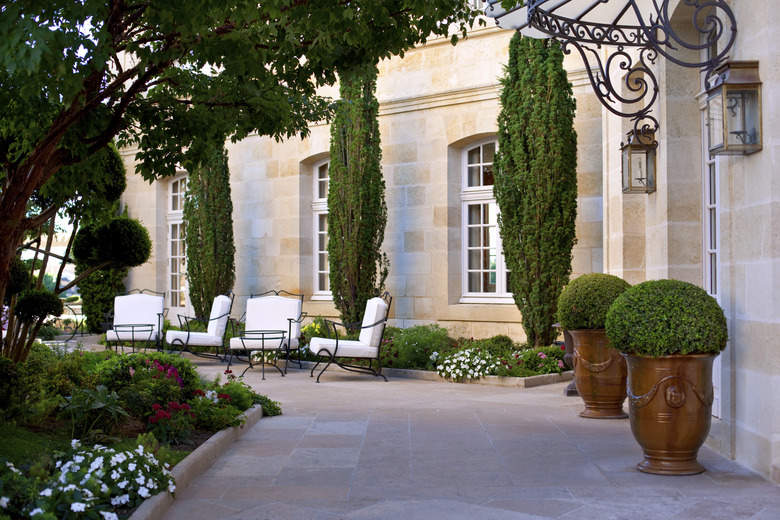Potted Boxwood Topiary Winter Care
Potted boxwood topiaries (Buxus spp.) quickly become a gardener's treasure, as they add interest and versatility to entryways, patios and other garden features. You can keep your boxwood topiary alive and well by giving attention to a few details to protect your plant before winter weather sets in.
Potted vs. In-ground Boxwoods
Native to southern Europe, North Africa and western Asia, boxwoods (Buxus sempevirens) grow in the U.S. Department of Agriculture plant hardiness zones 6 through 10a. These boxwoods die out in hot summer locations, but the "Green" series, crosses between Buxus sempervirens and Buxus microphylla koreana, tolerate a wider range of temperatures, growing in USDA zones 6a through 10b, according to the New Sunset Western Garden Book. The hardiness of potted plants varies, somewhat, due to the increased exposure of a plant's root system to colder temperatures. There can be as much as a two-zone difference in the hardiness of potted plants versus in-ground plants, notes the Brooklyn Botanic Garden.
Containers for Winter Weather
Containers are one of the primary considerations when preparing your boxwood for winter in any climate. Terra cotta and concrete pots absorb moisture, which can crack the pot in locations where freezing temperatures occur. Wrapping pots in bubble paper or plastic-lined burlap can prevent this type of winter damage. However, the most durable pots for winter weather are fiberglass, iron, lead, heavy plastic and stone, according to Fine Gardening.
Winter Culture
All a boxwood plant needs for winter care is a cool, frost-free place,says Horticulture magazine. In milder climates, USDA hardiness zones 8 and warmer, container-grown plants require very little winter care other than shelter from cold wind and harsh winter sun. Overwatering can kill boxwoods; however, they should not completely dry out during the wintertime. Check your dormant boxwoods monthly, and water them before they completely dry out.
Avoid Potential Problems
Boxwoods exposed to winter sun can develop cambium activity too early in the season, according to the North Carolina Cooperative Extension Service. If this early growth of bark tissue is followed by harsh weather, your topiary can be damaged. Winter bronzing is also a common problem of boxwoods. Orangish- or brownish-colored foliage can be caused by low fertility, low pH and drying out during wintertime. To prevent wintertime boxwood bronzing, keep your topiary out of wind, topdress potted boxwood with an inch of organic mulch in the springtime to provide nutrients, and maintain soil pH of 6.5 to 7.2 by adding lime when a soil test indicates the potting soil is too acidic — a condition which can occur when ground pine bark or other acidic mulch is used.
References
- Brooklyn Botanic Garden: Overwintering Potted Plants
- Horticulture: Hardy Boxwood
- Fine Gardening: Wonderful Winter Containers
- The New Sunset Western Garden Book; Kathleen Norris Brenzel, ed.
- Southern Living: Boxwoods: Perfect for Pots
